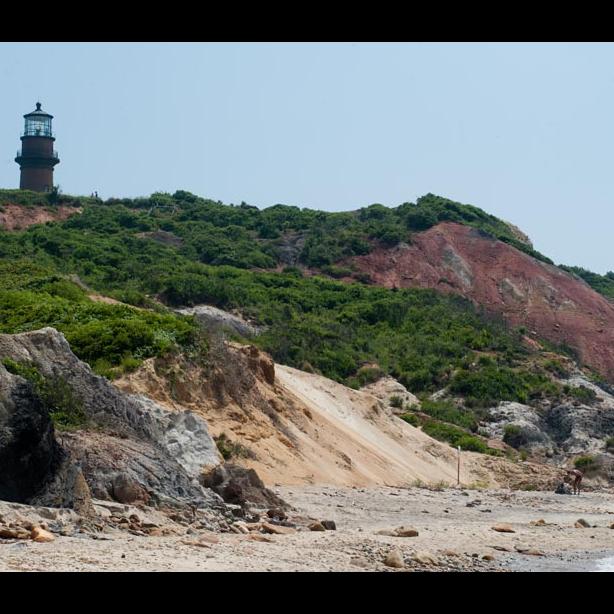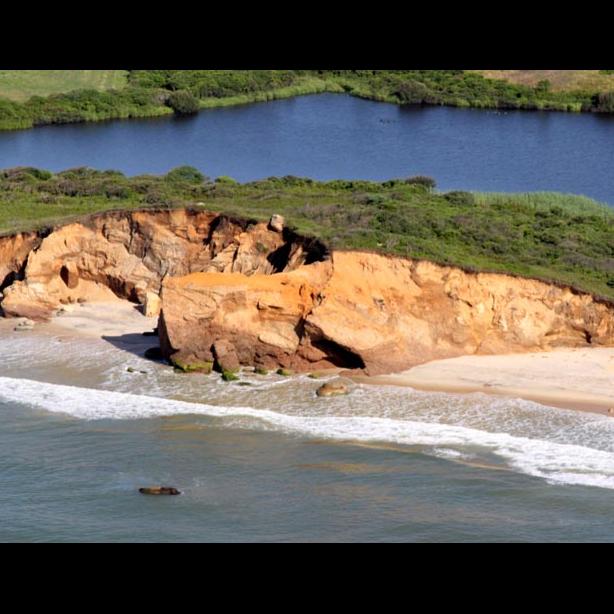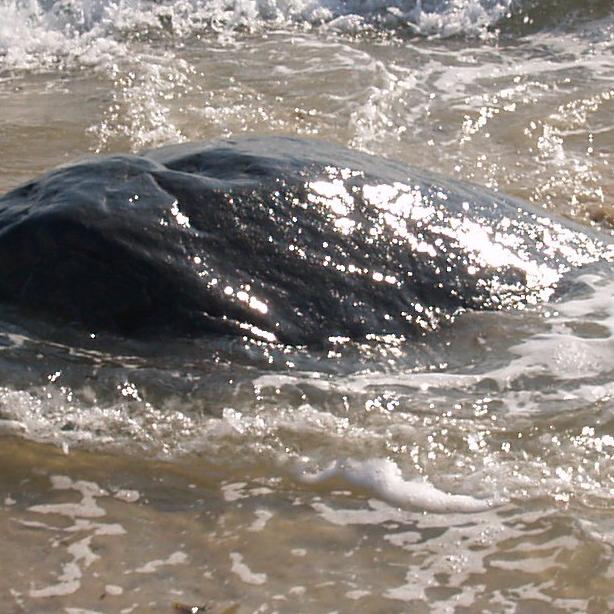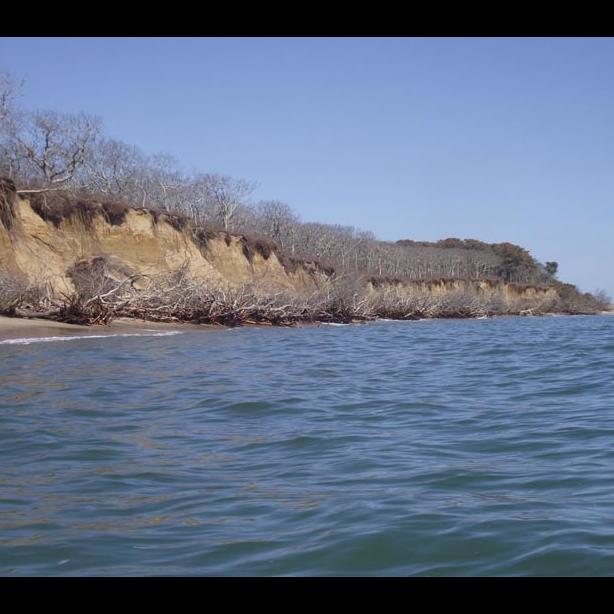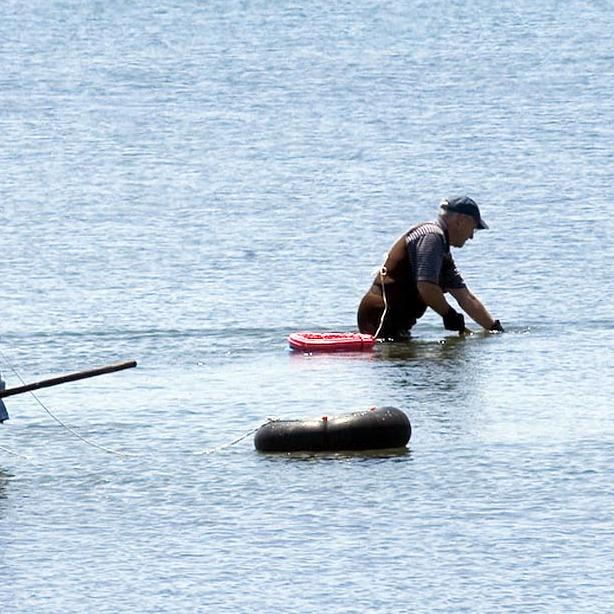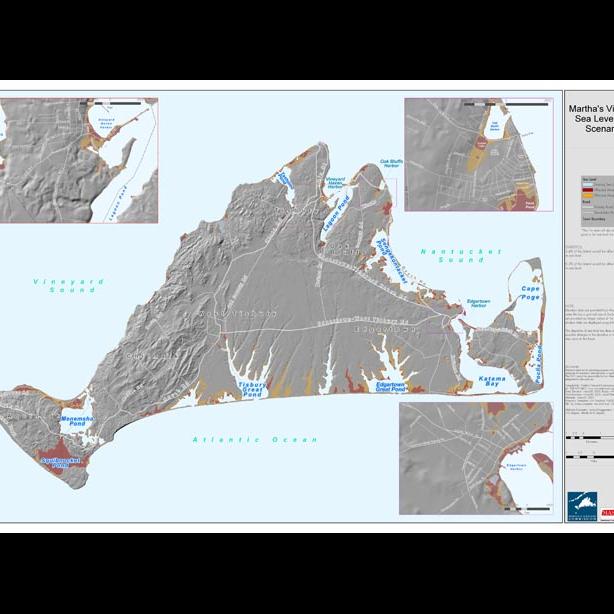Climate change
Climate change
August 22, 2013
Time to Wake Up to Climate Chaos
Have you been noticing the reports since Hurricane Sandy, consistently, nearly every week, all over the world — of very extreme weather events and conditions? If you’ve been denying yourself the opportunity to keep up on the details, now would be a good time to break the habit.
July 18, 2013
Trapped Groundwater Hastens Erosion at Gay Head Cliffs
As rapid erosion continues to threaten the Gay Head Light, a possible solution emerged this week to help mitigate the situation as the town embarks on a complicated, longer-term project to move the lighthouse.
November 1, 2012
After Sandy, Climate Change Has the Floor
In following the news coverage of Hurricane Sandy, I was struck by a strange reversal in reporting from before and after the storm. In the days leading up to landfall, the effect of climate change on the likelihood, strength or impacts of the storm was largely ignored; in accounts of the damage post-Sandy, the subject of climate change has been routinely raised.
August 23, 2012
Erosion on Chilmark Beaches Prompts Restoration Study
As drastic erosion continues to eat away at Chilmark’s south shore, town officials this week expressed grave concern for public safety and impeded access to Lucy Vincent and Squibnocket beaches. The Chilmark board of selectmen also approved a study for the extreme Upper Chilmark Pond, known as Upper Upper Chilmark Pond to some, for a possible dune restoration project.
August 16, 2012
As Carbon Dioxide Changes the Sea, Shellfish Biologists Work to Adapt
To anyone who has spent a languid summer afternoon tumbling in the waves on South Beach or watched the earth’s closest star dip into the horizon at Menemsha, the ocean can seem eternal and unchanging. But scientists are increasingly discovering that human activity is transforming what was once thought to be an invulnerable resource. The ocean is getting warmer, more acidic, louder and filled with the detritus of civilization. What effect these changes will have on the ocean’s inhabitants in the decades to come is unclear.
May 3, 2012
As Severe Erosion Takes Its Toll, Summer Closure Planned for Wasque Point
For the first time in living memory, Wasque Point on Chappaquiddick, a famed spot where riptides attract thousands of saltwater fishermen each year, will be inaccessible for much of the summer. The reason is the ferocious erosion now eating away huge chunks of the southeastern corner of Chappaquiddick at a rapid rate. The once-wide sandy beach at Wasque Point has been replaced by 20 to 28-foot sheer cliffs, with truckloads of uprooted pine and oak trees stuck in the crashing surf at their base.
September 22, 2011
Global Warming Spreads Seeds of Change
With sea level rise at our doorstep and storms chomping away at the shoreline it’s time to rethink an economy based largely on seasonal, coastal recreation. Why? Because as Ginny Jones, a lifelong Islander from a farming family muses so succinctly, “We can’t eat tourists.”
June 23, 2011
Warmer Waters No Friend to Shellfish
Clam chowder, bay scallops, fried oysters. Wampum bracelets. Shellfish are the grand bounty of the soft, sparkling salt ponds that ring the Island shore. We’d be hard pressed to find a local cultural symbol more significant than the water-worn purple and white quahaug shell. Purple — the Island color.
May 26, 2011
More Frequent Flooding a Serious Concern
One day last month close to five inches of rain fell on Martha’s Vineyard. In Chilmark alone it caused a five-foot wide, four-foot deep sinkhole on State Road, the collapse of a two culverts and the dirt road to Lucy Vincent Beach, the collapse of an old granite bridge and the closure of South Road near the Allen Farm due to an impassable puddle.
Suddenly it’s flooding everywhere, all over the world — and it’s no fluke.
May 12, 2011
The Hard Facts About Sea Level Rise
Climate change is complicated; sea level rise is not. We live on an Island — a glorified sandbar — and the sea is closing in on us. It is rising much faster than anticipated. In the last century sea level rose by about a foot. In this century, due to human-induced global warming, it is expected to rise at least five feet, according to a new report by the international Arctic Monitoring and Assessment Program.

